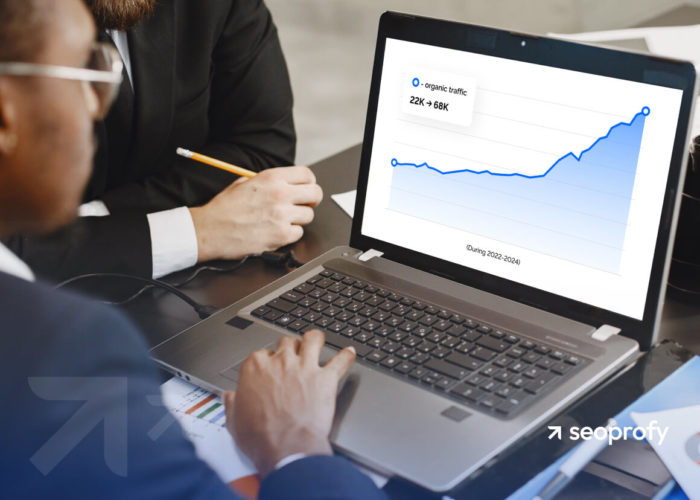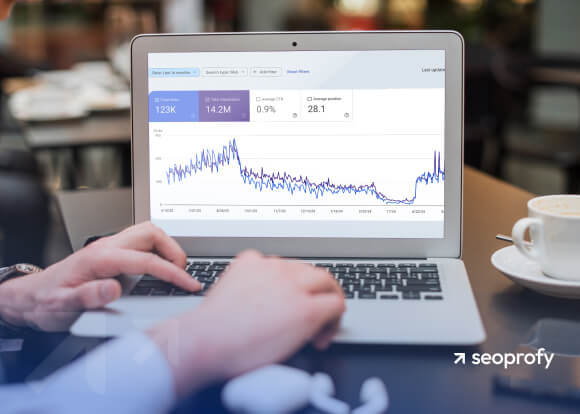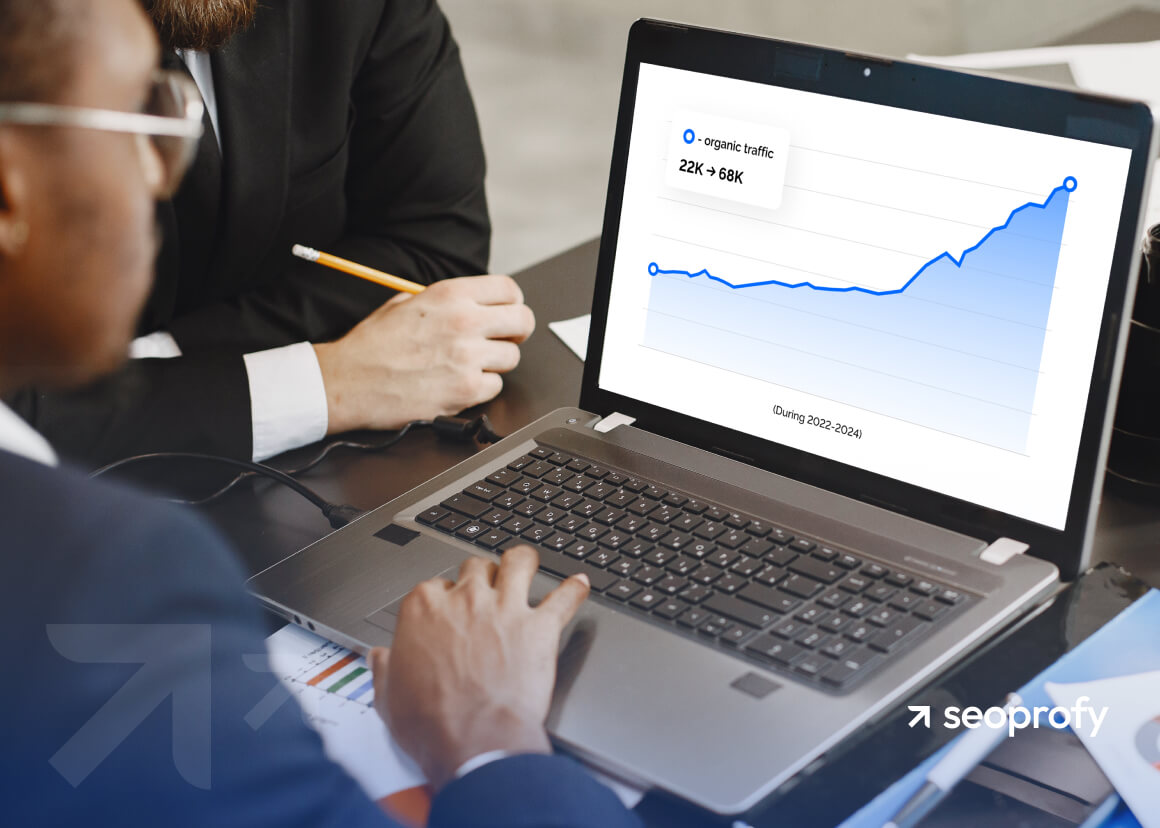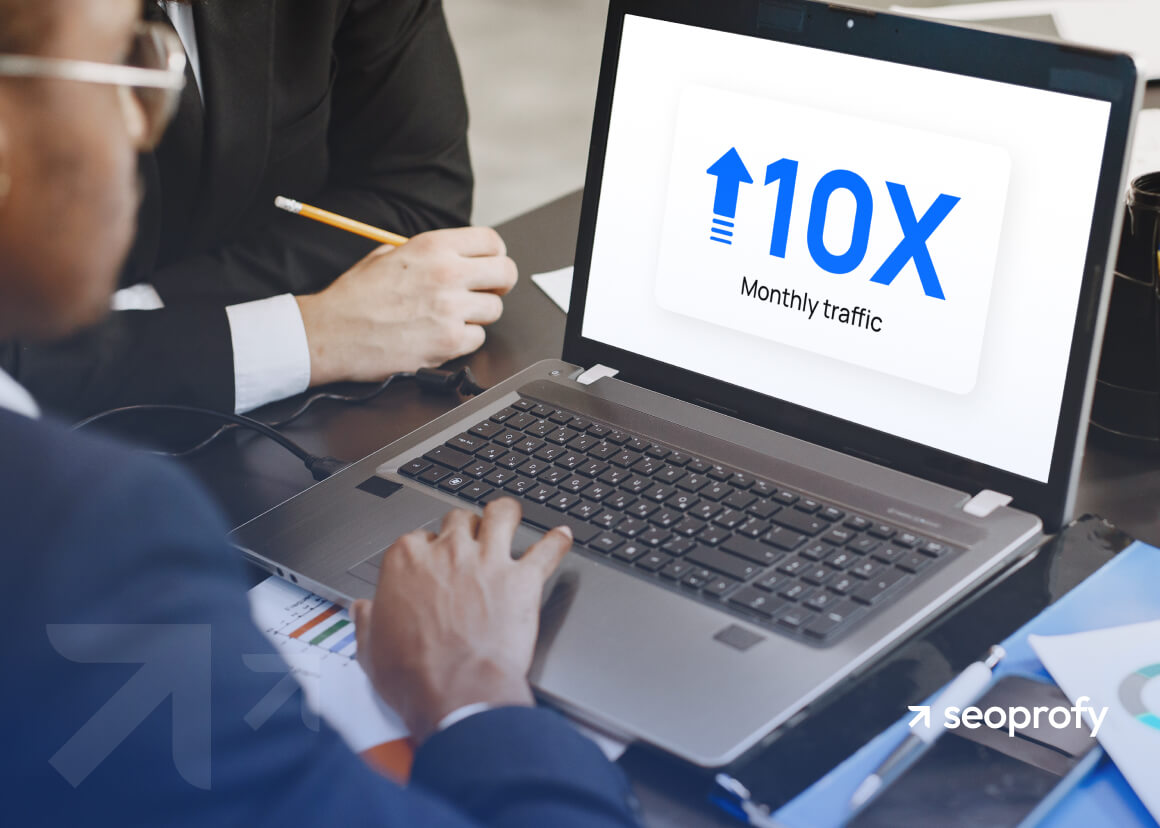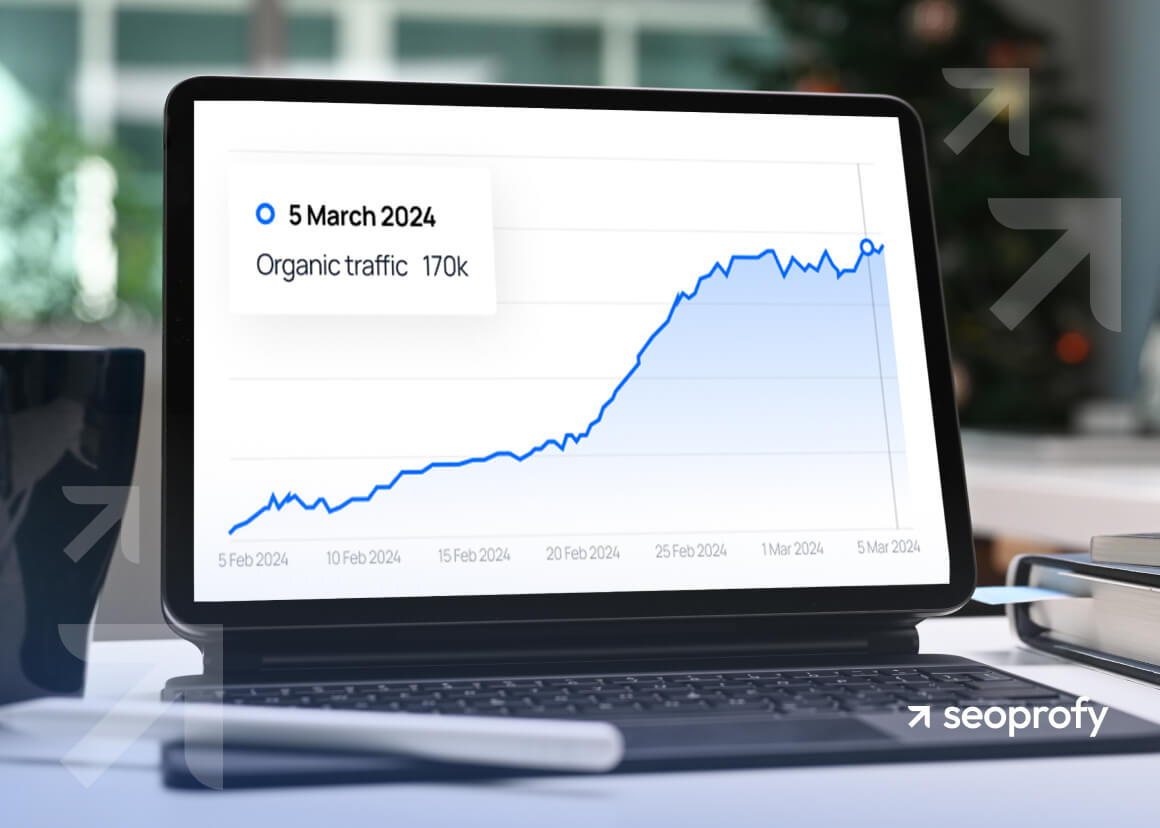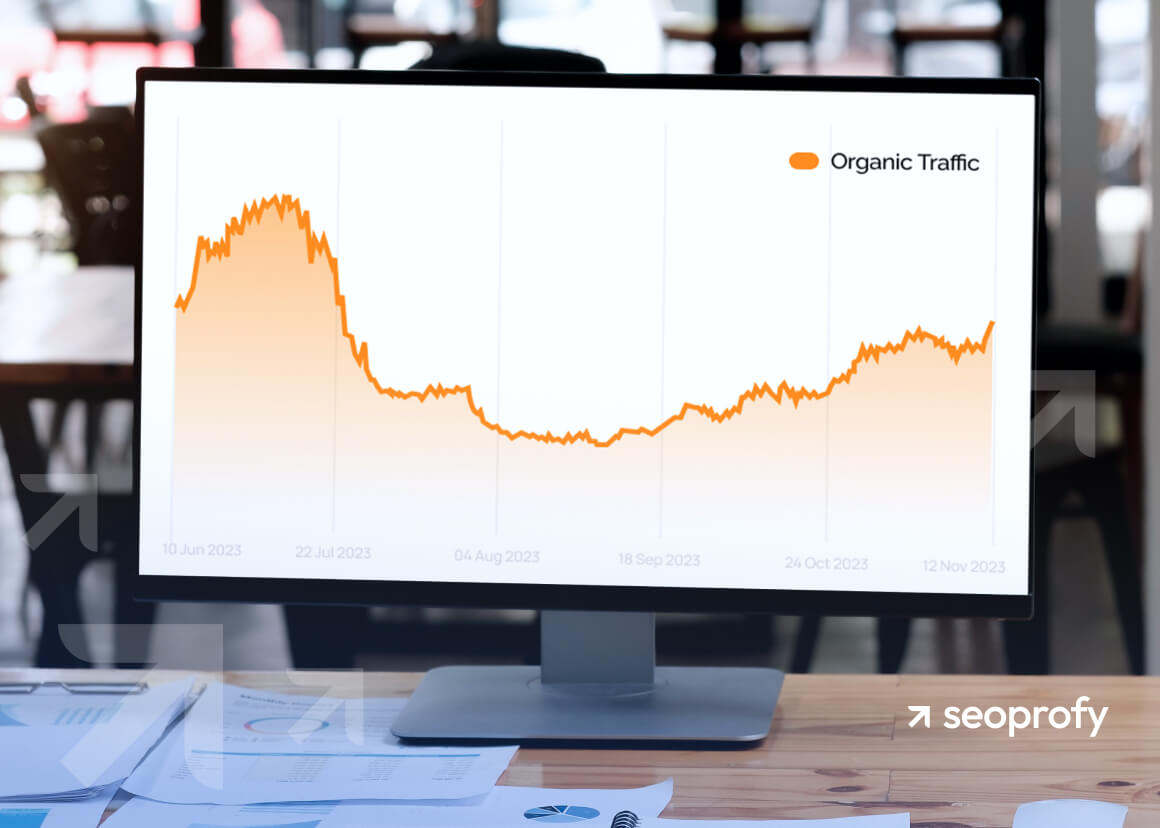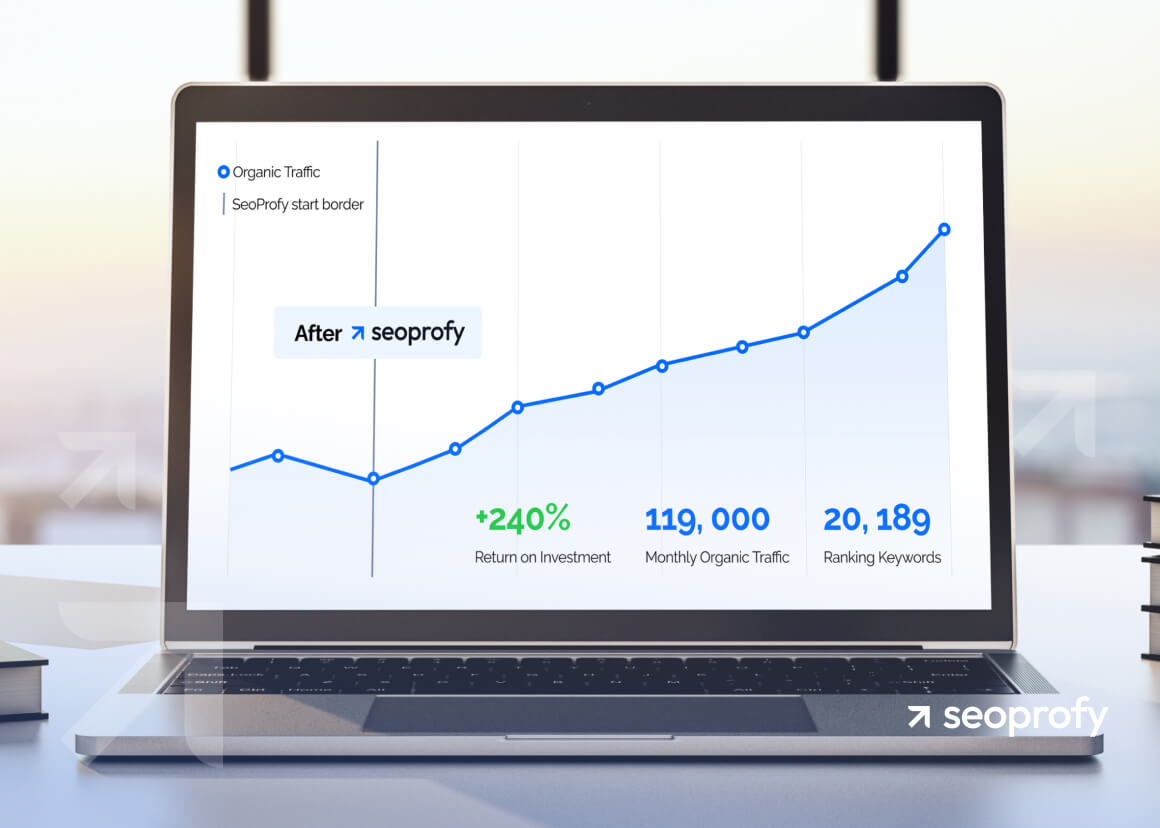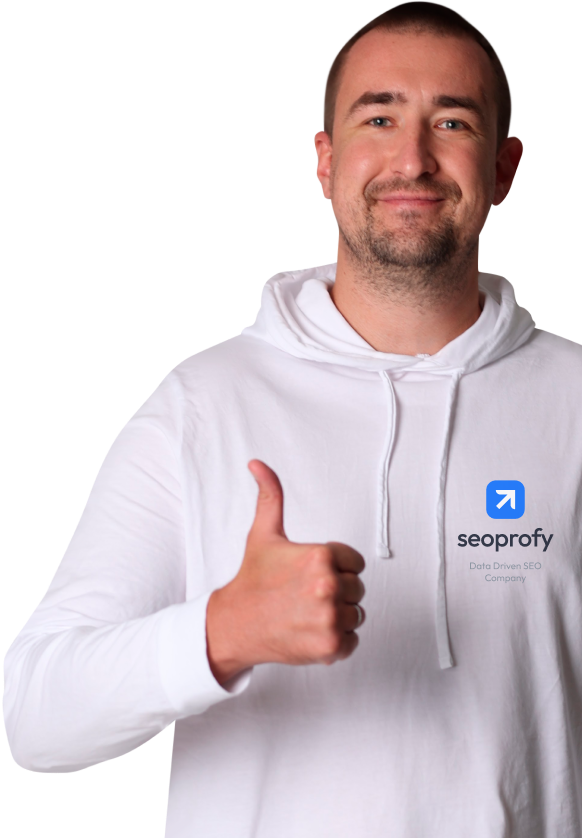March 2022: The beginning of cooperation
| Domain Age | 12 years |
| Niche/Market | SaaS |
| GEO | USA |
| Target Language | EN |
| Daily Organic Traffic (Overall) | 20700 |
| Backlink profile | 8.5K referring domains |
| Pages | 3M |
| Monthly Budget | $6000 |
At the beginning of 2022, the client contacted us to discover growth points and a new perspective on the development of their project, which was growing quite slowly:
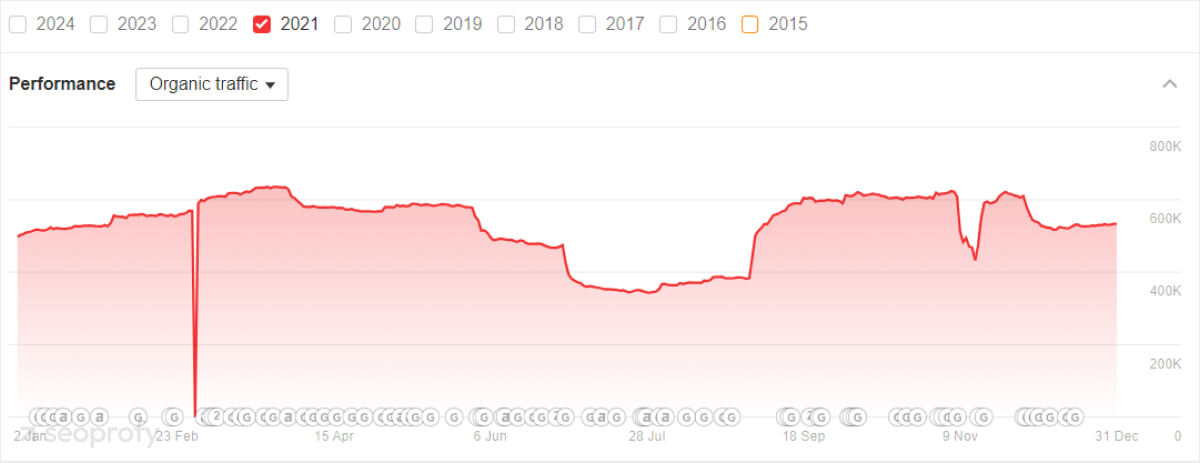
Main issues
Our cooperation began with a detailed SEO audit and the development of a long-term strategy. During the analysis, we discovered the following issues with the client’s website:
Technical SEO
- Duplicate pages with WWW and HTTP
- Duplicate pages with many slashes at the end of the URL
- Pages with 3xx and 4xx HTTP status codes
- Missing canonical URLs
- Download speed issues
- Chaotic internal linking
Content Issues
- Duplicate H1 titles
- Several H1 titles on a page
- Content cannibalization
- Not enough content on the pages
- Problems with semantic HTML
- Uncontrolled UGC content
- Lack of keywords on the pages
- The product didn’t completely meet the purchase intent
Links
- Constant spam attacks
- The client had never opted for link building
Challenges
The client’s website had more than 3 million pages in search results, but we decided to focus on optimizing the category with the highest conversion rates.
The main goal was to double the traffic from this category in one year. At the same time, the major challenge was the client’s limited resources, which only allowed us to focus on one category. Plus, the overall large volume of the site and numerous technical errors affected the performance of the selected category, complicating our efforts to achieve the optimization goals.
Project’s strategy development
First, we conducted a detailed audit of the site to assess its current condition and identify all existing problems. This process helped us rank issues by their impact on the website’s performance and develop a comprehensive action plan for the project.
Team
Considering the results of the website audit and our analysis of the available information, we carefully selected the experts for our team:
- Senior SEO Specialist
- Link builder
- Account Project Manager
Market niche research
We performed an in-depth analysis of our client’s market niche and identified five main competitors with whom we had significant keyword overlap. It’s important to note that the chosen category covered a wide range of topics. Thus, any competitors who specialized even in one of these topics could also match the search intent of our page.
Therefore, we constantly included new sites for consideration while analyzing competitors. Due to this, we revealed new interesting trends and patterns that influenced our strategy.
While comparing the client’s website with the market leaders, we discovered the following problems:
- Lack of a clear structure within the category
- Some pages didn’t completely match the intent
- Breadcrumbs didn’t match the structure
- Primary keyword stuffing or lack of keywords
- Lack of pages necessary to increase traffic
- Poor image quality
- Less informative images than those of competitors
- Insufficient number of links on highly competitive pages
- Lack of structured data
Action plan development
We prepared a comprehensive SEO strategy for the project based on the market niche analysis and technical audit. Considering the amount of work required, it was essential to set priorities for the tasks. After this, we quickly started implementing our ideas, contributing to rapid positive changes in search rankings and growth in organic traffic.
In addition, it was important to involve the client’s team to ensure that the synchronic work of each member would guarantee the desired results. The list of these specialists included developers, copywriters, designers, and content creators.
The main stages we started with:
- UGC content moderation
- Eliminating basic technical SEO issues (duplicated pages, canonical URLs, server response time, website speed)
- Implementing a clear hierarchy within the category of existing pages
- Working on a backlink profile
- Handling spam attacks
- Creating new pages
- Updating existing content
- Image optimization
- Improving the landing pages’ structure to fully match the intent
Work on the project
UGC content moderation
The client’s website had pages with content created by both professional creators and ordinary users. The total content generation was about 800 pages per day. Although some of these pages drew significant traffic, most of them had poor quality or limited content volume. Their repetitive headlines weren’t bringing any traffic but were still affecting the crawl budget by increasing the load on the website.
Due to this, we decided to moderate this content. Existing pages that contained more than 1,000 characters of text and were generating any number of clicks were left open for indexing and included in the sitemap. At the same time, the pages that didn’t meet these requirements were closed for indexing and removed from the sitemap.
Also, it was decided that users’ new pages had to go through a one-month verification period. Only the pages that met the set volume and minimum traffic requirements were added to the sitemap and remained open for indexing.
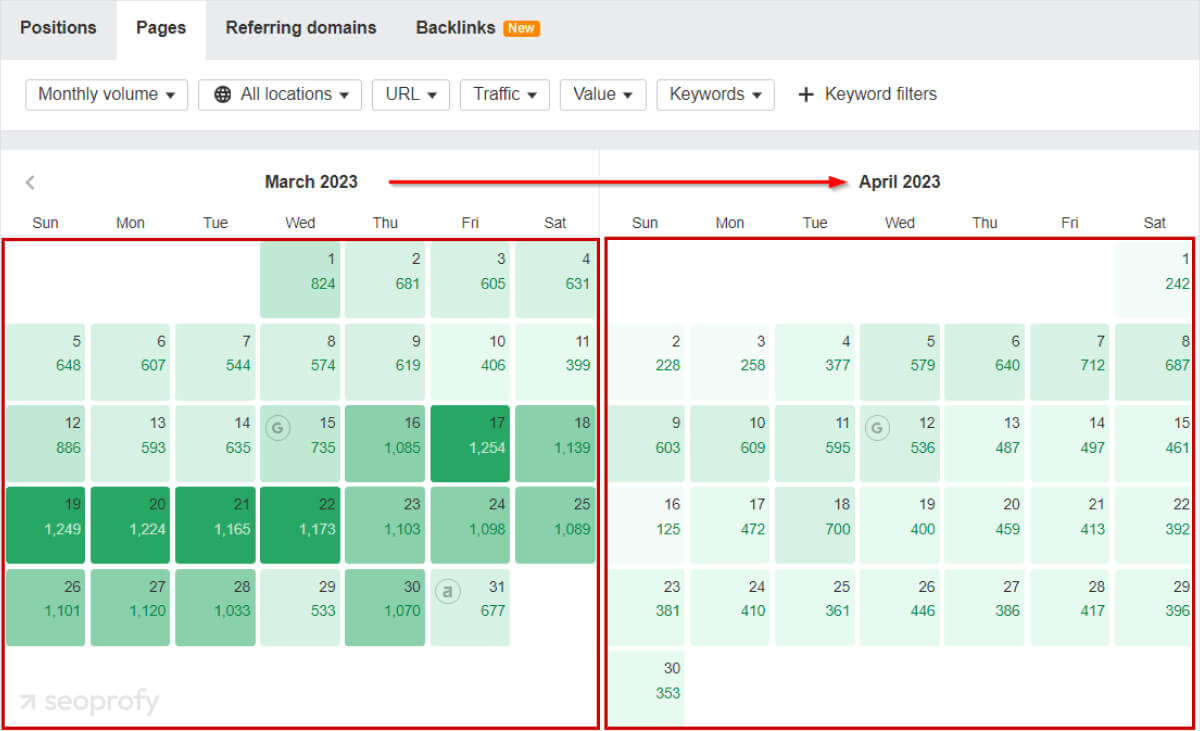
Thus, we optimized the indexing, ensuring better use of the crawl budget. Due to this approach, we reduced the number of low-quality pages, increased the overall quality of content, and improved users’ interaction with the website.
Elimination of basic technical SEO issues
404 error pages
We fixed more than 320 internal links leading to 404 (page not found) pages. They were either removed from the content or redirected to relevant pages with a 200 status code.
Redirection and canonicalization
We fixed misconfigured redirection for URLs with multiple forward slashes to avoid duplicated pages. For instance, such pages had a 200 status code and were available for indexing, resulting in serious technical challenges:
https://site.com/service////
https://site.com////service
Besides that, we found misconfigured canonical tags on most pages, such as:
URL: https://site.com/page/
<link rel=”canonical” href=”” />
In some cases, canonical attributes weren’t referring to the appropriate URLs.
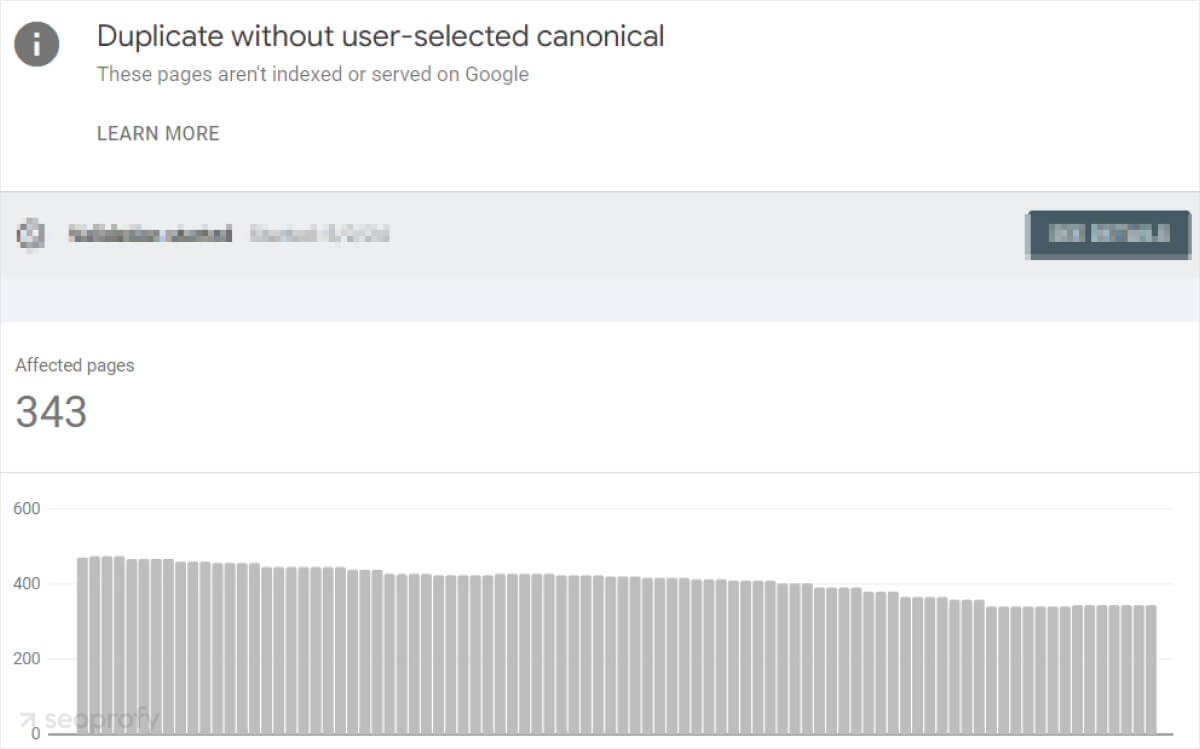
Website speed
Optimizing the website’s speed required us to focus on key aspects to achieve better results than competitors:
- Reducing server response time to initial requests: Server settings were improved to ensure faster responses.
- Minimizing the number of requests and volume of data transfer: We optimized resource usage by reducing the number and size of loadable files.
- Optimizing the Largest Contentful Paint (LCP): We reformatted images in WebP and improved the loading of important media elements.
- Preventing large layout shifts: We carefully adjusted page elements to minimize sudden shifts during loading.
- Preventing non-composite animations: We optimized animations for better performance and user experience.
These changes significantly improved the website’s stability under heavy load and increased its index in PageSpeed Insights, reaching the parameters of leading competitors.
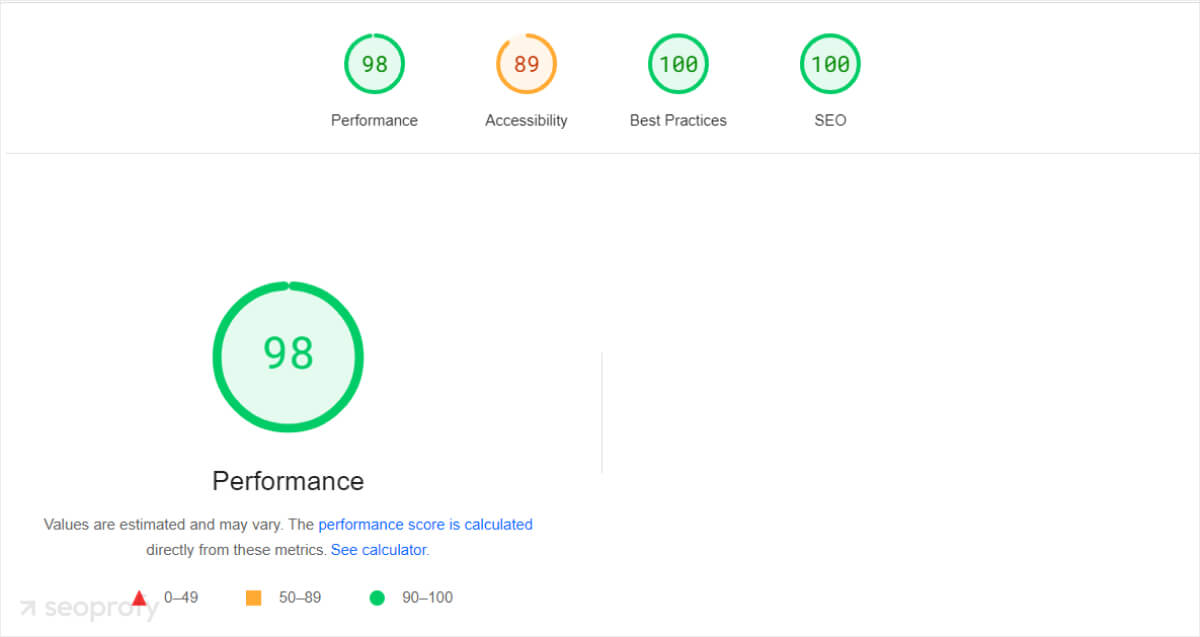
Implementation of a clear hierarchy within the category of existing pages
We faced a poor category structure on the client’s website while working on the project. Initially, the categories didn’t include subcategories and looked more like hub pages. They contained only lists of links to the pages that were driving the most traffic and conversions. These categories required up to two clicks to access, while the landing pages required up to three clicks.
Based on the market analysis, we decided to reorganize the existing structure, dividing the categories into subcategories, grouped by topics. That was a sure way to improve navigation and user perception of the website. We created pages for each subcategory that, according to the analysis, had the potential to attract significant traffic.
Additionally, we optimized the user interface by designing the header with a tab menu for main categories and subcategories. Also, in the website’s footer, we integrated a link to the hub page, which started functioning as a site map. These changes not only improved the website’s structure but also ensured better interaction with users, contributing to an increase in organic traffic.
Before:
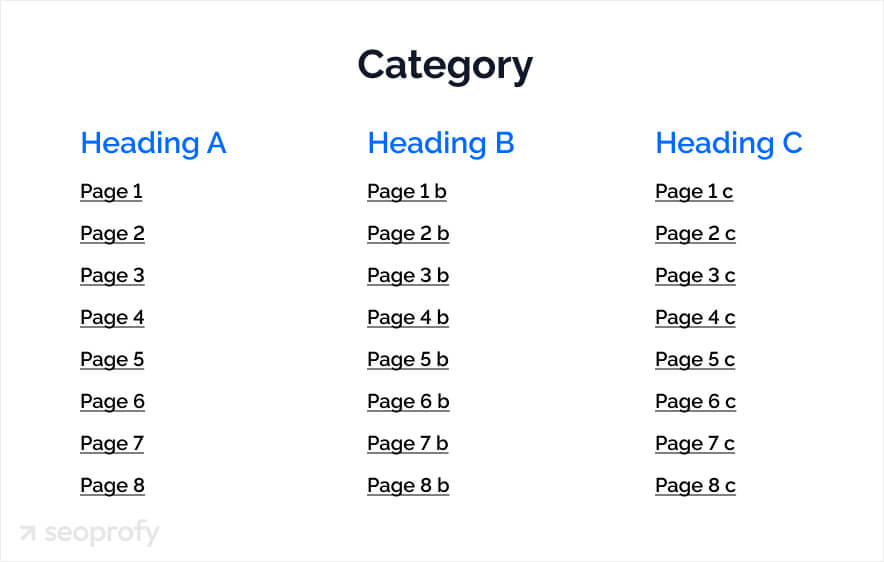
After:
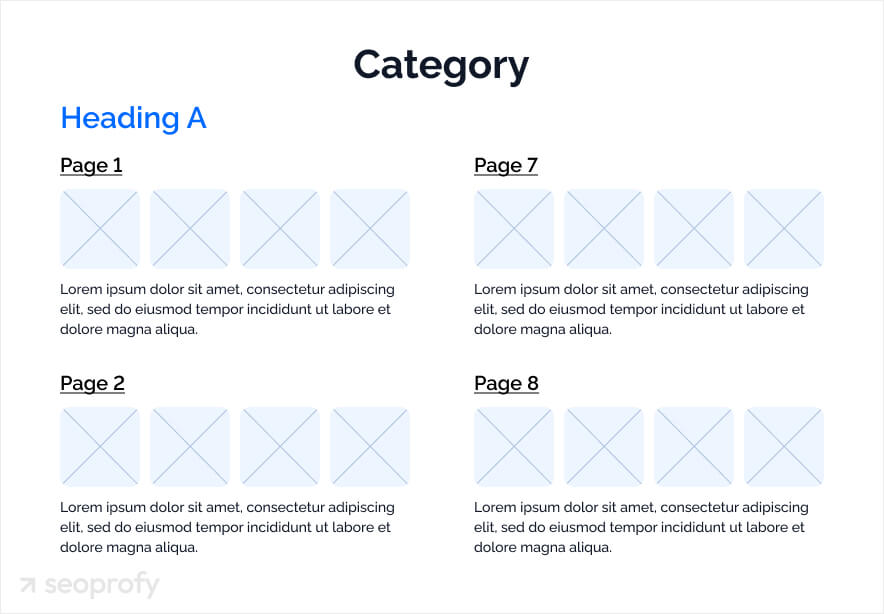
Handling spam attacks
First, we performed a comprehensive analysis of the site’s backlinks using data from Ahrefs, Semrush, and Google Search Console. The overall number of discovered domains with links to the website was nearly 22,000.
Based on this information, we thoroughly analyzed the quality of backlinks and prepared a list of those that had to be disavowed. We used the Google Disavow tool to remove unwanted or harmful links.
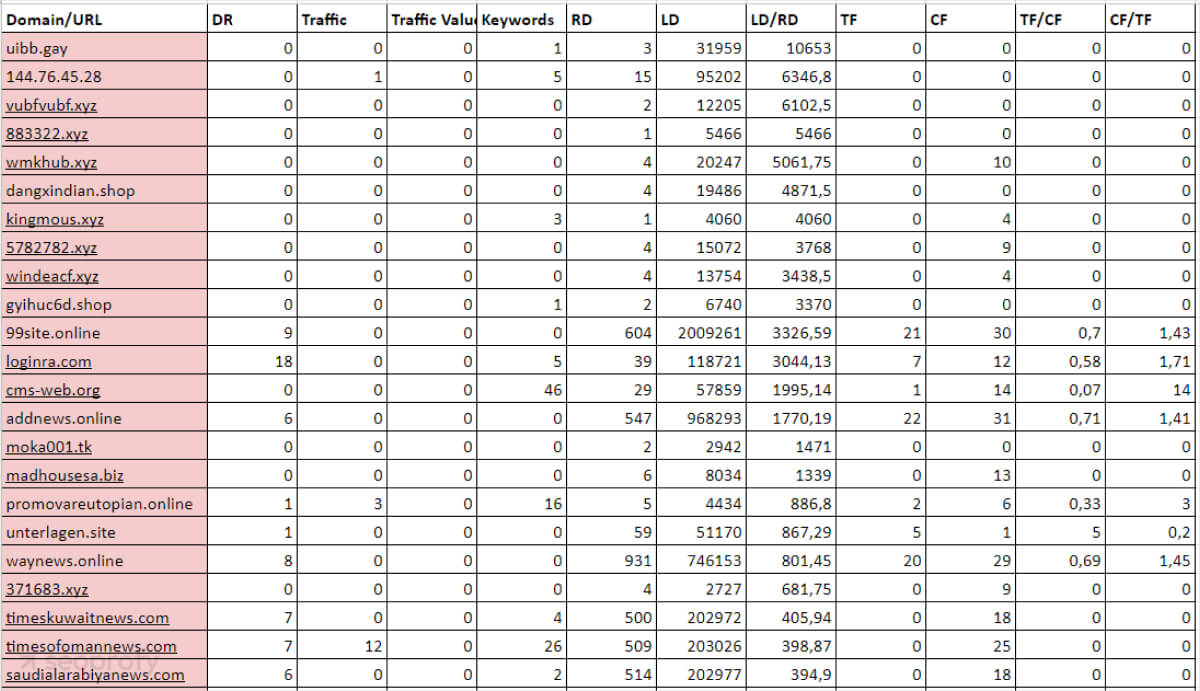
At the same time, the rapid disavowing of low-quality links could affect organic traffic. Thus, at first, we focused on building top-quality links. Following a gradual removal strategy, we used the Google Disavow tool to get rid of nearly 10% of the spam links every 3-4 weeks.
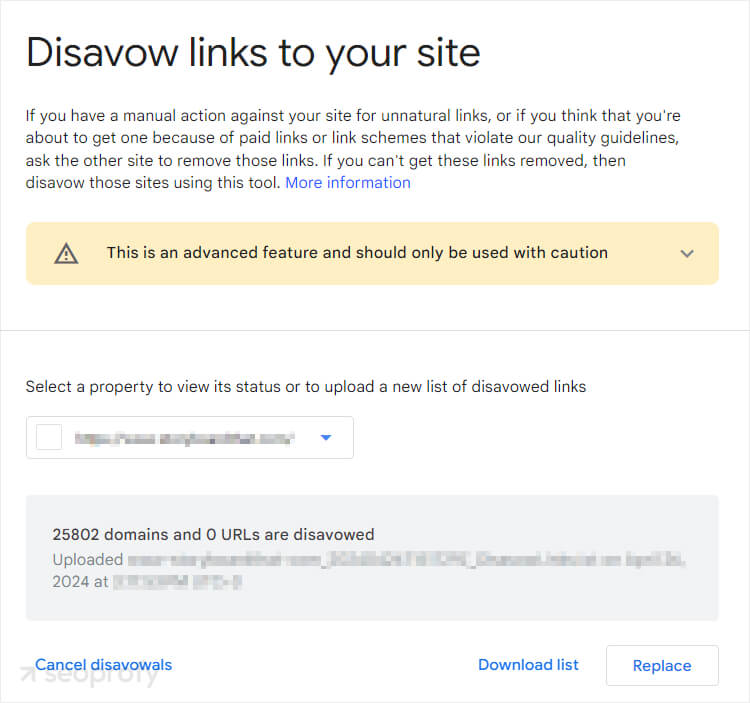
Also, we conducted monthly audits to discover new low-quality links, as we often encountered spam attacks. Thanks to this systematic approach, we could quickly respond to any issues and maintain a good backlink profile for the website.
Work on a backlink profile
We followed a comprehensive approach while developing a link building strategy, based on the analysis of the traffic potential of separate pages. First, we analyzed all of the landing pages within the priority category, identifying the ones that generated the most traffic and conversions. We determined the main keyword query for each page and evaluated their parameters, such as search volume, traffic potential, keyword difficulty, and keyword position.


In addition, we compared the main competitors, analyzing the same parameters for their pages. Thus, we determined which key questions we had to implement to keep up with the niche leaders. Plus, we discovered the approximate number of links necessary for each page.
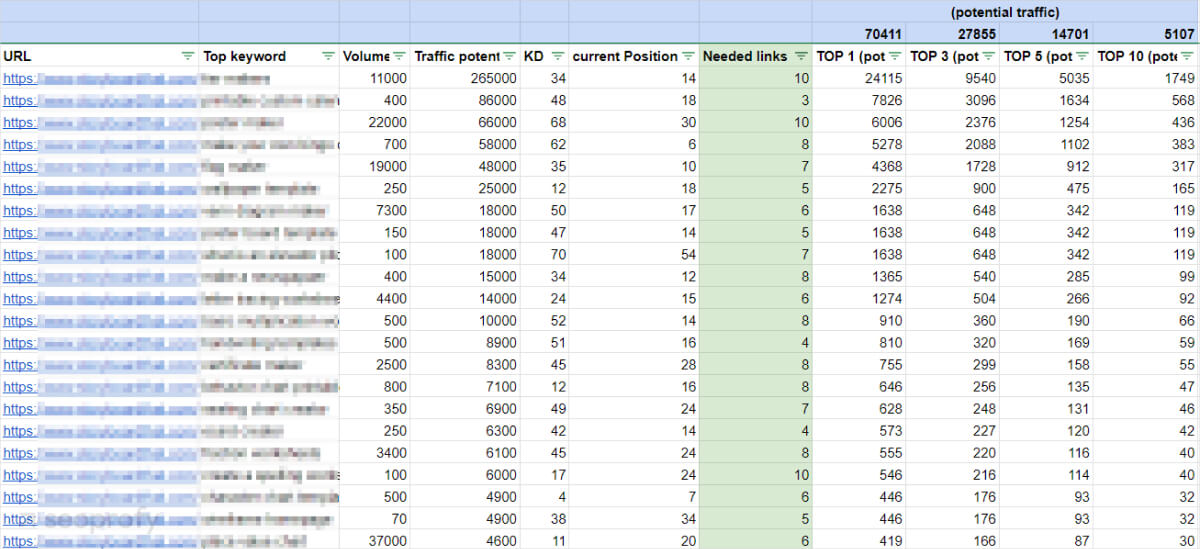
We calculated the potential traffic for each keyword depending on its position in the search results (TOP 1, TOP 3, TOP 5, TOP 10) using coefficients from the SEO Clarity research. We used this data to set priorities in the link building process:
- Initially, we focused on the clusters with the highest potential from the TOP 5-10.
- Our next priority was the pages with high and medium potential but low KD.
- After this, we started working on the pages with medium potential and positions in the TOP 10. At the same time, they needed a minimal number of links to reach the competitors’ ranking.
Following this comprehensive approach, we efficiently allocated resources and boosted the website’s visibility in search engines.
As a result, we witnessed an increase in quality backlinks, which led to the growth of organic traffic. The screenshot provided below demonstrates the backlink growth trend recorded by Ahrefs.
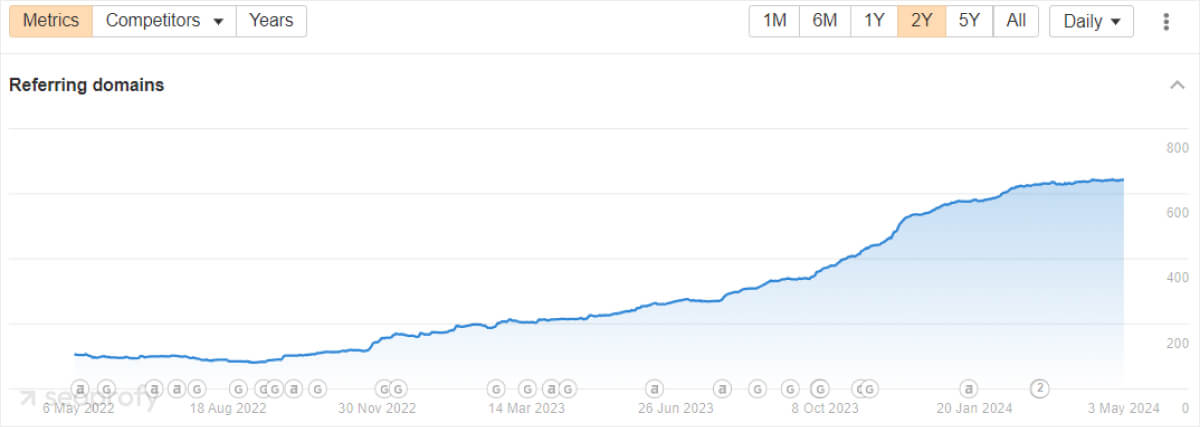
Results
Thanks to our implementation of this strategy, the website’s traffic doubled within a year. We solved several critical issues that had a negative impact on the site’s performance and developed a detailed action plan to guide the client to further success.
In nearly 2 years of cooperation, the organic traffic in our priority category increased from 22,000 users per month to 68,000 users per month (309%).
The website’s organic traffic has more than doubled:
Google Search Console 16 months:

The analysis of the monthly dynamics of clicks in the middle season showed an increase in traffic of 140%. To get a more accurate estimate of the results, we compare them every month throughout the year, considering the seasonality of the niche.
Google Search Console (month by month):
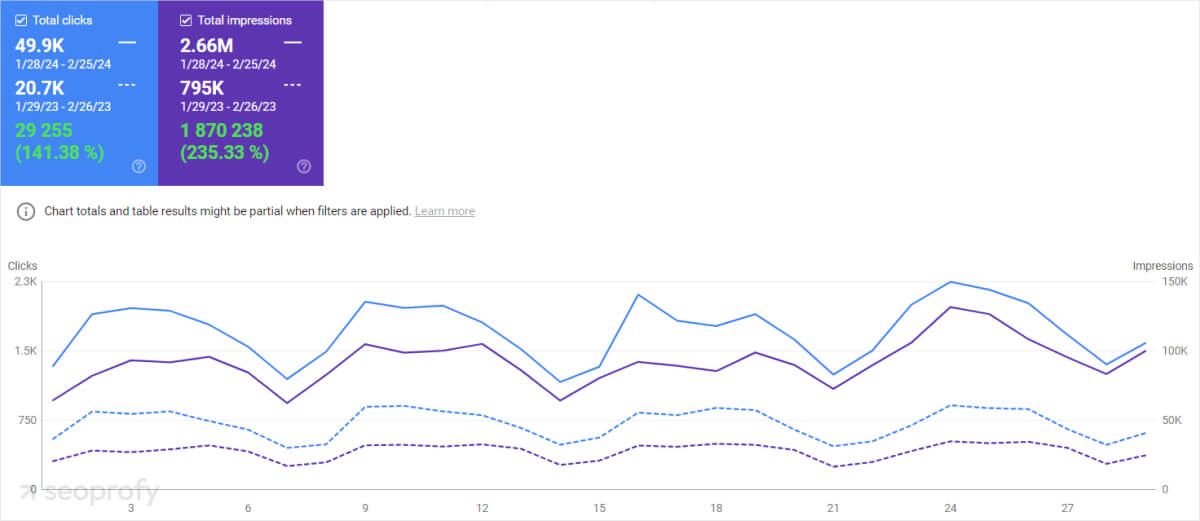
Ahrefs:
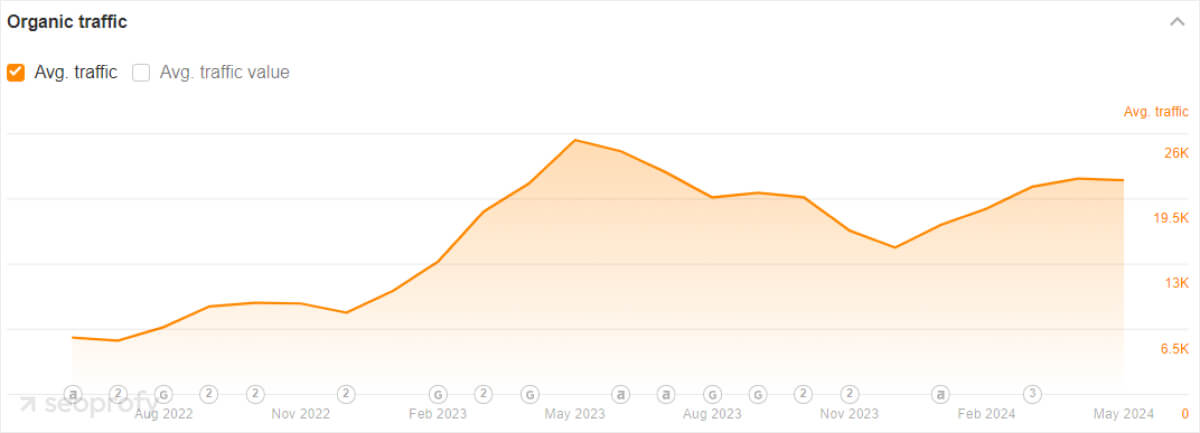
Organic keywords:
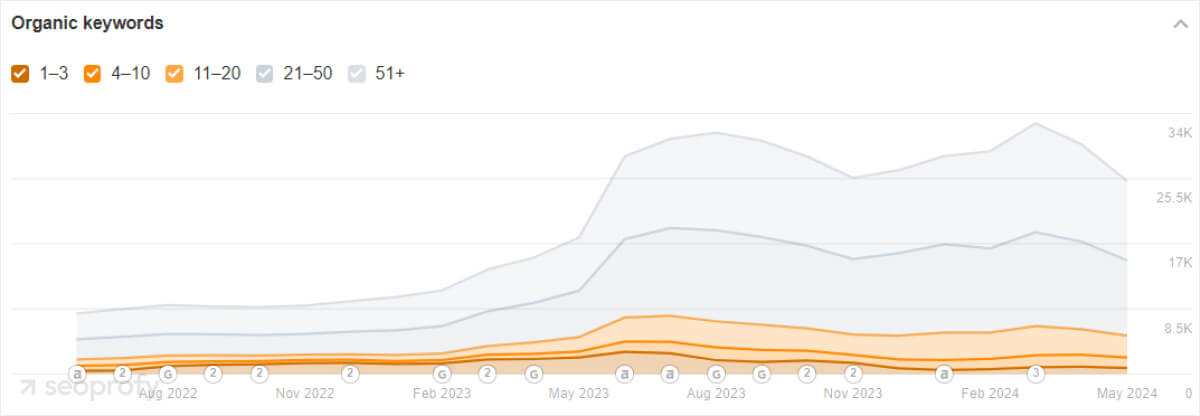
Overall clients traffic is way bigger but as i said we were focusing only on commercial landing pages that drive revenue for this project:
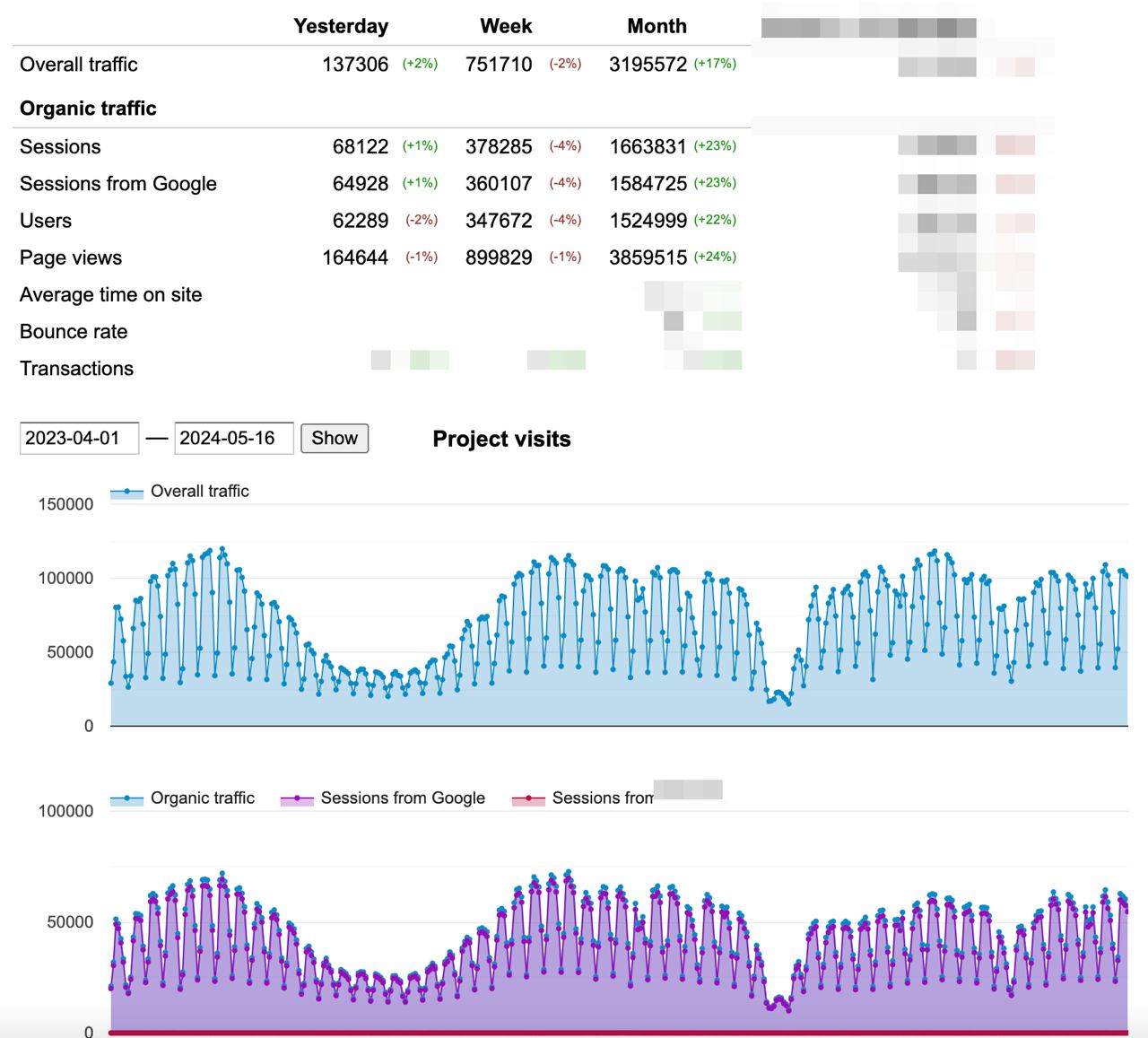
We are still working with the client, and our goal for 2024 and 2025 is to grow organic traffic by 50%+ year-over-year, as well as enter new potential markets.
Also, you are welcome to get acquainted with another case. It demonstrates how a client’s organic traffic has increased by 10 times in 3.5 years of cooperation with our team.
If you have any questions related to this case or how we can help you with SEO for Your SaaS Business, get in touch with us and we’ll help your project achieve impressive results.

